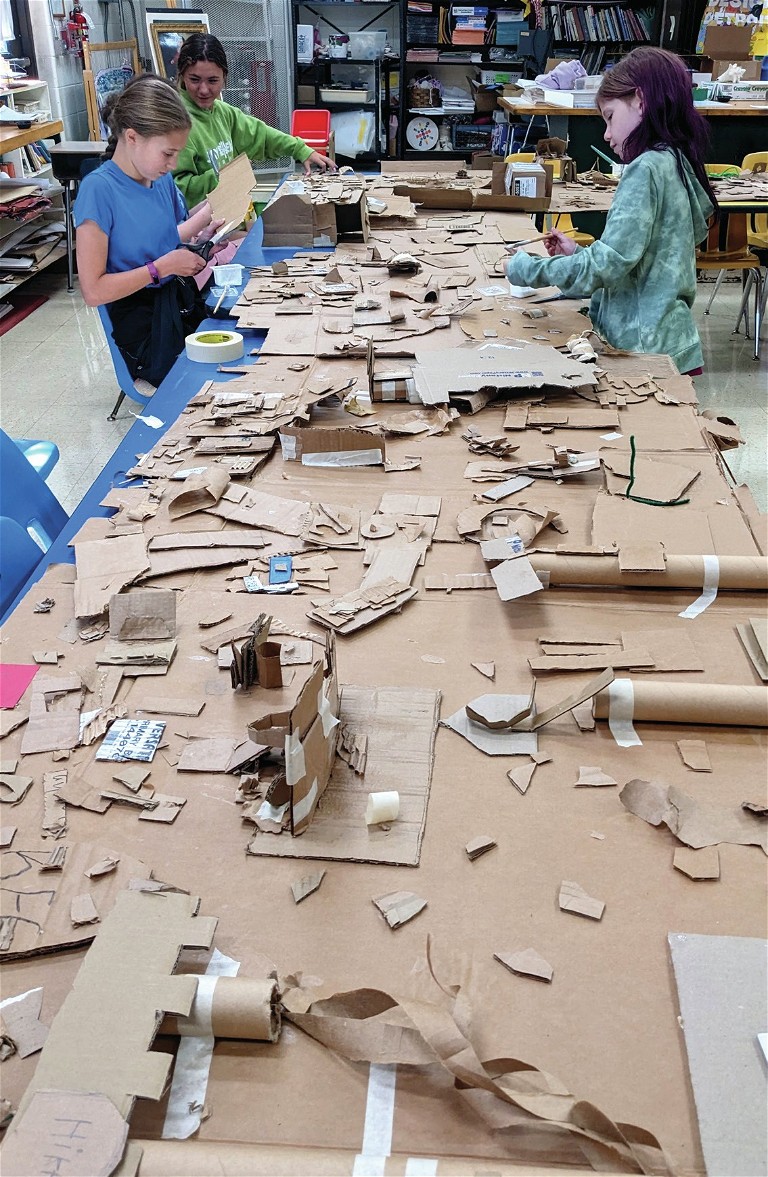EARLY CHILDHOOD / ELEMENTARY
Students reflect on the finished collaborative work through the language of drawing.
Ruth Byrne
There are many things my eightyear-old and I have in common. One example of this is that nothing irritates me more than someone telling me to take a deep breath and relax. I do enjoy taking deep breaths and engaging in ref lective activities such as yoga and doodling—I know it helps me slow down and ref lect—but when an administrator urged us to practice mindfulness and teach it to our students, it rubbed me the wrong way, and I’ve been trying to figure out why. After starting this new school year with a big, messy collaborative project, I think I’ve figured it out. Getting your mind and body to calm down is only the first step; working through what made you frustrated in the first place is what makes that mindfulness meaningful.
Outside the Vacuum
Mindfulness strategies are often taught in a vacuum (e.g., meditating when your surroundings are conveniently calm). The benefits from those soothing experiences are not always easy to apply in stressful or collaborative workspaces. Students need supportive opportunities to apply their mindfulness training so they can work through misunderstandings and conf lict, or they risk papering over problems with self-soothing techniques. I wanted to come up with a way to contextualize mindful strategies so students could practice self-regulation while talking through an uncomfortable feeling with a friend or listening to another person without jumping to conclusions.
Getting your mind and body to calm down is only the first step; working through what made you frustrated in the first place is what makes that mindfulness meaningful.
An Authentic Difficult Situation
The solution was surprisingly simple. I would give students a collaborative assignment with no obvious solution, and we would mindfully work through the difficulties we encountered with painting and conversation. Students were given just a few minutes, some cardboard, glue, and scissors to create a shared surface that would later be painted. Many students got halfway through a great idea, leaving clues for the next group to pick up on; some students completed a small, effective cardboard illustration; and all students had to entrust their artwork to students in future classes. When those future students arrived, they were perplexed by the cardboard beginnings, sometimes misinterpreting, sometimes adding on, or constructing new ideas. At this point, the visual conversation was easy, and students had no trouble finding ways to fit into or build onto the artwork.

Students create a shared cardboard surface on which subsequent classes would construct new ideas.
Preview Mode - Subscribe to unlock full content


SchoolArts Magazine
Inspiring Creativity Since 1901
A national art education magazine committed to promoting excellence, advocacy, and professional support for educators in the visual arts.
Categories
Explore our inspiring content by topic